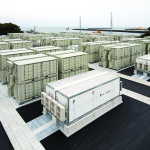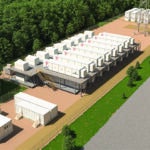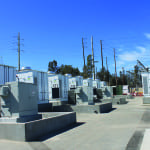Chinese state entity State Grid Corp. of China (SGCC) and battery maker BYD in January said they had finished construction on what they call “the world’s largest battery energy storage station”—a project in Zhangbei, Hebei Province that combines 100 MW of wind and 40 MW of solar capacity, a smart power transmission system, and 36 MWh of energy storage in arrays “larger than a football field.” The $500 million project uses BYD’s lithium iron phosphate battery technology, which SGCC said it chose for a service life of over 20 years (Figure 1).
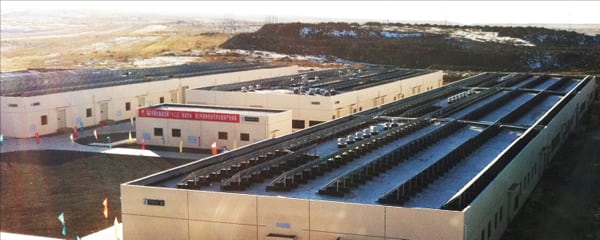 |
| 1. A big deal. Chinese state entity State Grid Corp. of China and battery maker BYD developed a $500 million energy storage facility that combines 100 MW of wind and 40 MW of solar capacity, a smart power transmission system, and 36 MWh of energy storage. Courtesy: BYD |
SGCC in September had lauded completion of another iron phosphate battery storage station—the 12-MWh Shenzhen Baoqing Battery Energy Storage Station in the Longgang District of Shenzhen City, which is tied to a 110-kV substation supporting the rapidly growing Biling Industrial Park. That facility, like the Zhangbei project, is being used for load leveling and daytime peak shaving.
The two projects may be the largest iron phosphate battery projects, but they are not accurately called the largest, nor the most powerful, existing energy storage projects, experts point out. Comparisons of energy storage projects are unwieldy because some developers measure projects in megawatts, as opposed to megawatt-hours.
Among other large energy storage projects is the Laurel Mountain energy storage facility in Randolph and Barbour Counties near Elkins, W.Va., which comprises 98 MW of wind generation and 32 MW of integrated lithium ion battery storage. AES Wind Generation and AES Energy Storage began operating this project in October 2011 and call it “the largest project of its kind.” A 34-MW sodium sulfide battery system was installed at a 51-MW wind farm in Japan by the Japan Wind Development Co. in 2008. And Alaska’s Golden Valley Electric Association has been using a nickel cadmium battery storage system since 2003 that has been designed to deliver 27 MW over 15 minutes (6.75 MWh) to improve reliability services—but whose maximum test limits show it can discharge up to 46 MW in 5 minutes.
Several interesting new energy storage projects are slated to come online in the next five years. Among them is UK company Highview Power Storage’s 350-kW pilot plant near London, which recently completed tests and was connected to the National Grid (Figure 2). Called a “Cryo Energy System,” the pilot uses liquefied air or liquefied nitrogen (air is 78% nitrogen) that can be stored in large volumes at atmospheric pressure. The company is considering building a 7-MW to 10-MW unit using the technology within two years.
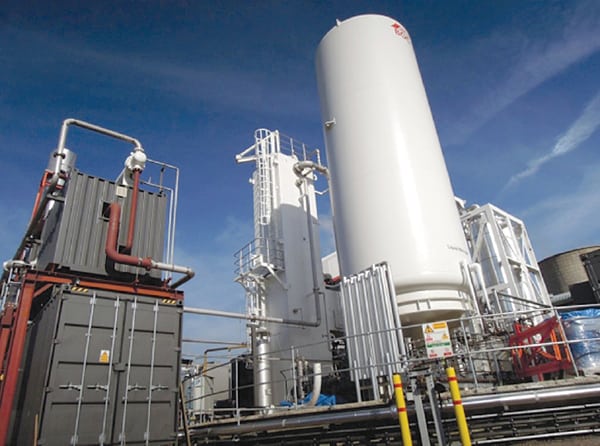 |
| 2. Chilled storage. UK company Highview Power Storage completed 150 hours of operational testing of its “Cryo Energy System,” a novel technology that relies on phase-change and expansion of liquid air to run an engine. Courtesy: Highview Power Storage |
“Liquefied air has a high expansion ratio between its liquid state (–196C) and, more common, gaseous state; expanding about 700 times when regasified,” the company says on its website. “As with a traditional steam engine, a cryogenic engine relies on phase-change (liquid to gas) and expansion within a confined space e.g. engine cylinder or turbine. Since liquid air boils at –196C, ambient temperature will superheat it, creating regasification and expansion. An engine can therefore use freely available environmental heat as the heat source.”
Bloomberg New Energy Finance points out in a study of UK energy storage efforts that a niche market for relieving bottlenecks in the transmission and distribution of power is already viable and that energy storage will be able to economically meet the need for fast-response reserves and short-term operating reserves between 2014 and 2017.
One significant development for energy storage worldwide is that the price of lithium-ion batteries is poised to fall, the research group says: “In the long-term, as more and more electric vehicles are made and sold, the cost of batteries used in these vehicles will fall, and this technology will be directly transferable to the grid system as well. Most grid-scale lithium-ion battery projects today cost more than $1,000/kWh, but with battery manufacturing capacity likely to outstrip supply in the short term, Bloomberg New Energy Finance is forecasting significant price drops in the next 36 months, towards $600/kWh by 2015.”
—Sonal Patel is POWER’s senior writer.







